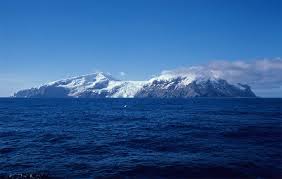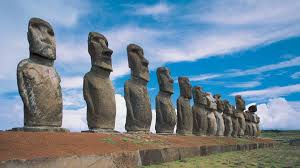Islands have always fascinated explorers and adventurers with their unique isolation and mystery. The world’s most remote islands are particularly intriguing due to their extreme isolation, distinctive ecosystems, and the challenges they present. This article explores some astonishing facts about these isolated gems, shedding light on their unique characteristics and the remarkable stories behind them.
1. Bouvet Island: The Most Isolated Island on Earth

Location and Isolation
Bouvet Island is considered the most remote island on Earth. Located in the South Atlantic Ocean, about 1,000 miles (1,600 kilometers) from the nearest landmass, Tristan da Cunha, it lies approximately halfway between South Africa and Antarctica. This isolation makes it one of the least visited places in the world.
Discovery and Ownership
The island was discovered in 1739 by the French explorer Jean-Baptiste Charles Bouvet de Lozier. It is a dependency of Norway, which claimed the island in 1927. Bouvet Island is uninhabited, with its only inhabitants being a few researchers who occasionally visit the island for scientific purposes.
Unique Features
Bouvet Island is covered almost entirely by glaciers, with the ice cap covering about 93% of its land area. The island’s volcanic origin and remote location contribute to its harsh and frigid climate, making it a challenging environment for human habitation.
2. Pitcairn Islands: The Legacy of the Bounty Mutineers
Historical Background
The Pitcairn Islands, located in the South Pacific Ocean, are known for their connection to the famous mutiny of the HMS Bounty. In 1789, mutineers from the ship, led by Fletcher Christian, settled on Pitcairn Island. Their descendants still inhabit the island today.
Population and Society
Pitcairn Island is one of the smallest and most sparsely populated territories in the world, with a population of fewer than 50 people. The island’s remote location, about 1,300 miles (2,100 kilometers) from Tahiti, contributes to its isolation. The community maintains a close-knit and self-sufficient lifestyle, relying on agriculture, fishing, and occasional tourism for sustenance.
Cultural Heritage
The islanders’ unique heritage is a blend of Polynesian and European influences. Pitcairn Island’s society is known for its strong sense of tradition and historical significance, maintaining connections with the broader Pitcairn Islands group, which includes nearby Henderson, Ducie, and Oeno Islands.
3. Easter Island: The Mysterious Moai Statues

Location and History
Easter Island, or Rapa Nui, is located in the southeastern Pacific Ocean, approximately 2,200 miles (3,540 kilometers) west of Chile. It is famous for its massive stone statues, known as moai, which were constructed by the Rapa Nui people between 1400 and 1650 AD.
Moai Statues
The moai statues are a distinctive feature of Easter Island, with over 800 statues scattered across the island. These statues, which represent important ancestors and leaders, were crafted from volcanic tuff and placed on ceremonial platforms called ahu. The construction and transportation of these statues remain a topic of research and debate.
Cultural and Environmental Challenges
Easter Island’s isolation has led to unique cultural developments but also significant environmental challenges. The island’s deforestation and soil degradation are attributed to past practices and external influences. Today, the island is a UNESCO World Heritage Site and a popular tourist destination, with efforts ongoing to preserve its cultural and environmental heritage.
4. Socotra Island: A Unique Biodiversity Hotspot
Location and Isolation
Socotra Island, located in the Arabian Sea off the coast of Yemen, is renowned for its unique and diverse flora and fauna. It is often described as one of the most alien-looking places on Earth due to its distinctive plant species and rugged terrain.
Flora and Fauna
Socotra’s isolation has resulted in the evolution of several endemic species. Notable among these is the dragon’s blood tree, known for its distinctive umbrella-shaped canopy and red resin. The island is also home to various endemic birds, reptiles, and insects, making it a significant site for biological research.
Geological and Environmental Features
Socotra Island’s geology and climate contribute to its unique biodiversity. The island features a range of habitats, from limestone plateaus and sandstone mountains to arid plains and coastal wetlands. Its unique environment has been shaped by its isolation and harsh climatic conditions.
5. North Sentinel Island: A Protected Indigenous Community
Location and Isolation
North Sentinel Island, part of the Andaman and Nicobar Islands in the Bay of Bengal, is home to the Sentinelese, one of the world’s last uncontacted tribes. The island’s isolation is strictly maintained by Indian law, which prohibits outsiders from visiting.
Sentinelese Culture
The Sentinelese people have lived in isolation for thousands of years, maintaining their traditional way of life. They are known for their resistance to outside contact and their use of primitive tools and weapons. Their culture and language remain largely unknown to the outside world.
Conservation and Legal Protection
North Sentinel Island is protected by Indian law to preserve the Sentinelese way of life and to prevent the spread of diseases to which they have no immunity. The Indian government enforces strict no-contact policies to ensure the safety and preservation of both the island and its inhabitants.
6. Tristan da Cunha: The Most Remote Inhabited Archipelago

Location and Isolation
Tristan da Cunha, located in the South Atlantic Ocean, is part of a small archipelago that includes Tristan da Cunha, Inaccessible Island, and Nightingale Island. It is considered the most remote inhabited archipelago, with the nearest inhabited landmass being over 1,500 miles (2,400 kilometers) away.
Population and Lifestyle
Tristan da Cunha has a small population of around 250 residents, who live on the main island. The island’s economy is primarily based on fishing and limited agriculture. The community is known for its resilience and self-sufficiency in the face of isolation and harsh weather conditions.
Environmental and Geographical Features
The Tristan da Cunha archipelago is characterized by its rugged terrain, volcanic origins, and unique biodiversity. The islands are home to various seabird species and marine life, making them important sites for conservation efforts.
Conclusion
The world’s most remote islands offer a fascinating glimpse into the planet’s extremes. From the isolated Bouvet Island to the culturally rich Pitcairn Islands and the unique ecosystems of Socotra Island, these locations showcase the diversity of life and the challenges of living in extreme isolation. Exploring these islands not only highlights their unique characteristics but also underscores the importance of preserving their natural and cultural heritage for future generations. As we continue to learn more about these remote places, we gain a greater appreciation for the resilience and diversity of life on Earth.

